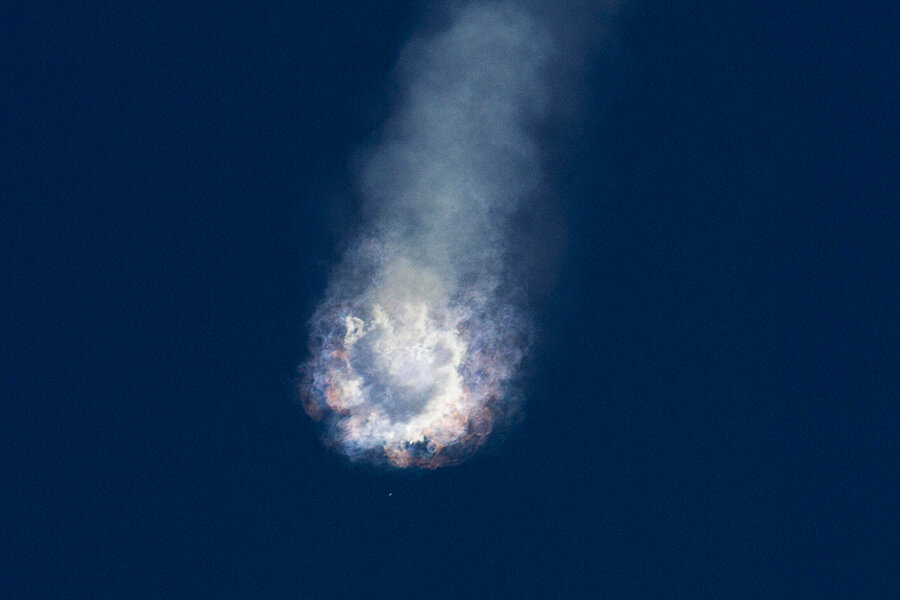SpaceX launch fails: How safe is rocket travel?
Loading...
A SpaceX Falcon 9 rocket was carrying more than 4,000 pounds of food and supplies to the International Space Station (ISS), when it exploded shortly after takeoff Sunday. This explosion marks the third cargo mission to fail in the past eight months, and would have been the 7th resupply mission for SpaceX; the six previous SpaceX supply runs have been completed successfully.
Sunday’s launch marks the second failed station shipment in a row. In April, a Russian cargo ship, Progress 59, spun out of control and burned up upon re-entry, along with all its precious contents. Last October, a privately owned Orbital ATK supply ship was destroyed in a launch accident. The Orbital flight consisted of an unmanned Antares rocket, which exploded shortly after launching from NASA's Wallops Flight Facility in Virginia. Similar to the most recent SpaceX launch, the craft held over 5,000 pounds of food and various supplies.
How do manned missions compare to unmanned missions?
NASA flew 135 space shuttle missions from 1981 to 2011. 133 of the missions were considered successful, but two ended in disaster. The Columbia vehicle exploded upon reentry in 2003, killing all on board, and the Challenger disaster occurred in 1986 when an explosion occurred shortly after liftoff.
Russia's Soyuz space program has experienced similar rates of success with a total of two fatal accidents in just over 100 manned missions, as of 2011.
SpaceX was founded in 2002 with the “ultimate goal of enabling people to live on other planets.” according to the company’s website. It currently has three space vehicles and over 3,000 employees. The company has a $1.6 billion contract with NASA to conduct at least 12 cargo resupply missions to the ISS, with the eventual possibility of transporting people.
SpaceX currently uses Falcon 9 rockets to carry their "Dragon" capsules into orbit. The company is also developing the “Falcon Heavy” which will be the world’s most powerful rocket upon completion, with the goal of lifting over 53 tons of weight into space.
The shift to reliance on private firms to resupply the ISS would end the United States' dependence on Russia for orbital transportation, which began with the end of the space shuttle program in 2011. NASA hopes rely on the private sector for astronaut transportation by 2017.
“The astronauts are safe aboard the station and have sufficient supplies for the next several months.” said NASA Administrator Charles Bolden in a statement on the failed mission. American astronaut Scott Kelly is spending a year at the ISS along with Commander Gennady Padalka and Mikhail Kornienko. “Today's launch attempt will not deter us from our ambitious human spaceflight program.” said Mr. Bolden.
The next Space Station resupply mission, Progress 60, will be launched by the Russian government July 3, 2015 from Baikonur Cosmodrome, Kazakhstan.






